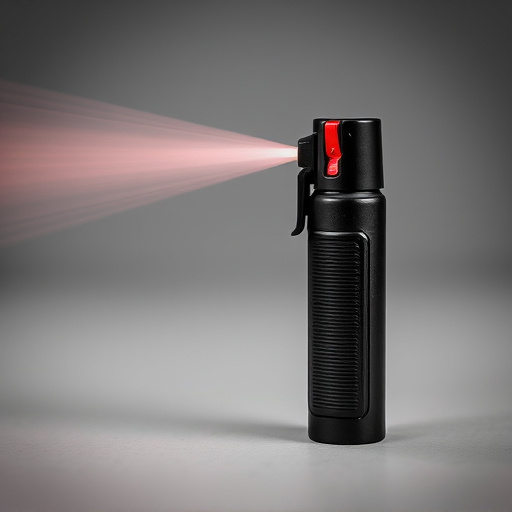In hot climates, proper Hot Climate Pepper Spray Storage is crucial for maintaining the effectiveness and safety of capsaicin-based self-defense devices. Extreme temperatures can degrade the active ingredient, reduce potency, and cause accidental activation. To ensure reliability, store pepper spray in cool, dry conditions away from direct sunlight, out of reach of children and pets, and adhere to local regulations. Advanced PPD designs incorporate heat-resistant components, ergonomic grips, and safety sensors while prioritizing the stability of capsaicin under high temperatures for optimal performance in challenging environments.
“Discover the revolutionary power of capsaicin-based personal protection devices (PPDs), especially tailored for hot climate environments. This article explores how pepper spray, leveraging the active ingredient capsaicin, offers unparalleled advantages in extreme heat. We delve into the design and features that make PPDs a game-changer for safety. Furthermore, we discuss critical storage considerations to ensure optimal effectiveness. Additionally, we touch on safety protocols, legalities, and responsible use practices, empowering you with essential knowledge for effective self-defense in hot climates.”
- Understanding Capsaicin: The Active Ingredient
- Advantages of Pepper Spray in Hot Climate Environments
- Design and Features of a Personal Protection Device (PPD)
- Storage Considerations for Optimal Effectiveness
- Safety, Legalities, and Responsible Use of Pepper Spray PPDs
Understanding Capsaicin: The Active Ingredient
Capsaicin, the active ingredient in hot climate pepper spray, is a natural compound derived from peppers, most notably the chili pepper. It’s what gives spicy foods their heat and, in this context, serves as an effective deterrent for potential threats. This potent chemical irritates the skin and mucous membranes, causing temporary pain and discomfort. When used in personal protection devices, capsaicin is carefully formulated to immobilize attackers without causing permanent harm, making it a safe yet powerful option for self-defense.
Storage of pepper spray containing capsaicin requires careful consideration, especially in hot climates. It’s crucial to store the device in a cool, dry place to maintain its effectiveness and prevent premature activation. Proper storage extends the shelf life of the spray, ensuring its readiness when needed most. Additionally, understanding the spray’s characteristics, including its range, duration, and safety measures, is essential for effective deployment, especially in challenging environmental conditions.
Advantages of Pepper Spray in Hot Climate Environments
In hot climate environments, traditional personal protection devices often fall short due to increased sweating and reduced effectiveness. However, pepper spray remains a superior option for several reasons. Its active ingredient, capsaicin, is highly effective in neutralizing attackers regardless of temperature, making it an ideal choice for regions characterized by scorching heat.
Moreover, proper storage of hot climate pepper spray is crucial to maintain its potency. Unlike many other self-defense tools that can degrade over time, pepper spray retains its strength when stored correctly—in a cool, dry place away from direct sunlight. This ensures users have reliable protection whenever needed, providing peace of mind in challenging environments.
Design and Features of a Personal Protection Device (PPD)
In the design and features of a Personal Protection Device (PPD) based on capsaicin, one key consideration is its suitability for hot climates. This device must be built to withstand high temperatures while retaining its potency and effectiveness. Advanced materials and engineering are employed to ensure that the active ingredient, capsaicin, remains stable and potent under extreme conditions. The PPD should also include features like an ergonomic grip for ease of use in various situations, a durable construction to resist weather and wear, and a robust storage system capable of securing the spray in hot environments.
Furthermore, smart design elements can enhance user safety and convenience. This includes mechanisms to prevent accidental activation, such as secure triggers and locking systems. Some models may offer additional features like UV protection for the container, heat-resistant nozzles, and advanced safety sensors that detect proximity or movement to activate the spray only when necessary. These features collectively contribute to making a capsaicin-based PPD a reliable and versatile personal protection solution, especially in challenging hot climate conditions.
Storage Considerations for Optimal Effectiveness
Storing your capsaicin-based personal protection device, like hot climate pepper spray, correctly is essential for maintaining its optimal effectiveness. In hot and humid climates, it’s crucial to keep the spray in a cool, dry place, away from direct sunlight. High temperatures and moisture can degrade the active ingredients over time, reducing the spray’s potency. Consider storing it in a sealed container within an air-conditioned area or a refrigerator to preserve its performance.
Additionally, ensure that you store the spray out of reach of children and pets. Keep it in a secure location where it’s easily accessible when needed, but not inadvertently triggered. Regularly check the expiration date and condition of your pepper spray, replacing it if it shows signs of degradation or after the recommended shelf life has passed.
Safety, Legalities, and Responsible Use of Pepper Spray PPDs
In using Capsaicin-based Personal Protection Devices (PPDs), such as pepper spray, safety is paramount. It’s crucial to store these devices in a secure and designated area, especially in hot climates, to prevent accidental activation or unauthorized access. Extreme temperatures can affect the integrity of the container, leading to potential leakage or malfunction. Always keep out of reach of children and pets.
Legally, the use of pepper spray varies by region, with some areas having strict regulations on its carrying, storage, and deployment. It’s essential to understand local laws before purchasing a PPD. Responsible use involves aiming properly, using only when necessary for self-defense, and immediately disposing of used canisters according to environmental guidelines. Remember, misuse or illegal possession can result in severe penalties.
In conclusion, capsaicin-based personal protection devices (PPDs) offer significant advantages in hot climate environments, providing a safe and effective deterrent. By understanding the active ingredient, leveraging their benefits, and adhering to proper storage considerations, individuals can ensure these PPDs remain reliable when needed most. Responsible use and awareness of legalities are paramount to making these devices a valuable asset for personal safety in challenging conditions.
